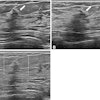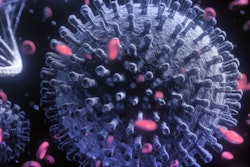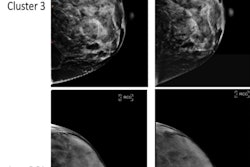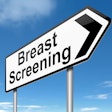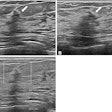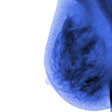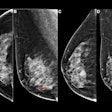Women are facing more delays in breast biopsies since the post-shutdown period of the COVID-19 pandemic, suggest findings published May 13 in the Journal of the American College of Radiology.
Researchers led by Babita Panigrahi, MD, from Johns Hopkins University in Baltimore, MD, reported increased delays in breast biopsies between the prepandemic and postshutdown periods. And women who are older, of a racial minority group, unemployed, uninsured, and unmarried are more susceptible to these delays, the team highlighted.
“These findings highlight the need for continued interventions to mitigate the effects of healthcare disruptions, particularly for vulnerable populations, to ensure timely breast cancer diagnoses during and in the recovery period following future healthcare crises,” Panigrahi and colleagues wrote.
The early days of the COVID-19 pandemic in the U.S. saw normal healthcare operations disrupted as resources were reallocated toward combating rising coronavirus cases. This included delays in breast care, including for breast cancer screening and some diagnostic services. Recent studies have attempted to quantify the downstream impacts of these healthcare disruptions, such as care delays and screening rebound rates.
Panigrahi and co-authors assessed factors that potentially contribute to delays in time from diagnostic exam to image-guided breast biopsies. They focused on three time periods: prepandemic (January 1, 2019, to December 31, 2021), shutdown (March 1, 2020, to May 31, 2020), and postshutdown (June 1, 2020, to December 31, 2021).
The retrospective study included data collected from 4,415 mammography exams with a BI-RADS 4 or 5 assessment from 4,197 women. The women were recommended for image-guided biopsy. Of the total women, 1,551 were in the prepandemic group, 170 were in the shutdown group, and 2,694 were in the postshutdown group. And image guidance was performed via ultrasound, stereotactic, or MRI.
The team reported the following findings:
- The median time to biopsy from diagnostic exam significantly increased from 11 days for the prepandemic period to 16 days for the postshutdown period (p < 0.001).
- Significant biopsy delays (30 days or more to biopsy) significantly increased from 9% for the prepandemic period to 12% for the postshutdown period (p = 0.001).
- Compared with the prepandemic period (8%), same-day biopsies increased in the shutdown period to 24% (p < 0.001) due to institutional implementation of same-day procedures during the shutdown. This declined to 2% during the postshutdown period (p < 0.001).
- On multivariate analysis, biopsies were more likely to be delayed in the postshutdown period than during the prepandemic period (odds ratio [OR], 1.4; p = 0.004).
The researchers also found the following patient factors to be linked to higher odds of biopsy delays in addition to time period: age between 60 and 70 years (OR, 1.5; p = 0.020), age 70 years or older (OR, 1.9; p = 0.002), Black (OR, 1.6; p < 0.001), Asian (OR, 1.9; p = 0.003), not having a personal history of breast cancer (OR, 1.4; p = 0.018), being unemployed (OR, 1.5; p = 0.005) or uninsured (OR, 2.7; p = 0.001), being unmarried (OR, 1.4; p = 0.004), and undergoing stereotactic (OR, 1.3; p = 0.013) or MRI (OR, 4.7; p < 0.001).
The study authors highlighted that targeted interventions and policies should reduce these disparities and ensure that vulnerable patient populations continue to have access to prompt breast care, even when healthcare faces disruptions.
The full study can be found here.


